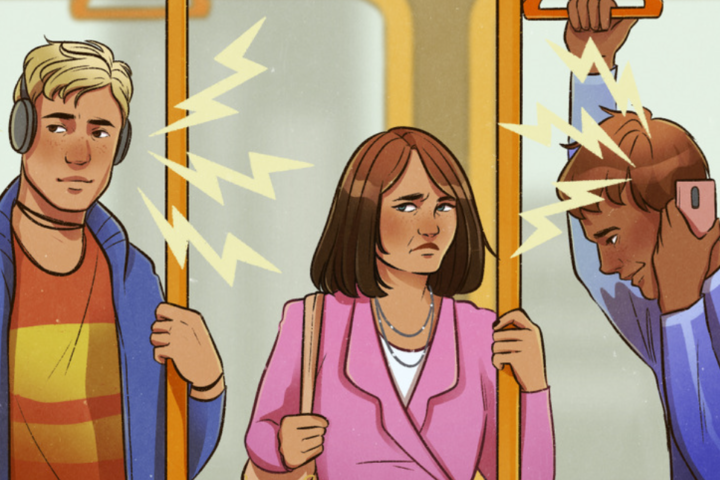Motion sickness is a common problem for many people. Whether it’s traveling in a car, on a plane, or even on a boat, the feeling of nausea, dizziness, and headache can make any trip uncomfortable and unpleasant. Fortunately, there are several tricks you can use to stop motion sickness and enjoy your travels.
1. Choose the Right Seat
Where you sit can make a significant difference in how you feel during your trip. If you’re traveling in a car, try to sit in the front seat or the middle seat in the back.
These positions allow you to see the road ahead, which can help your brain process the movement of the car. If you’re on a plane, choose a seat near the wings.
This area of the plane experiences less turbulence, which can help reduce and stop your motion sickness symptoms.
2. Look Ahead
When you’re in motion, your eyes send information to your brain about your movement. If your eyes see one thing, but your body feels something different, it can cause motion sickness.
To avoid this, focus your gaze on the horizon or a fixed point in the distance. This can help your brain reconcile the visual and physical sensations and reduce the feeling of nausea.
3. Stay Hydrated
Dehydration can exacerbate motion sickness symptoms, so it’s important to drink plenty of fluids before and during your trip.
Water is the best choice, but you can also try sipping on ginger tea or other non-caffeinated beverages. Avoid alcohol and caffeine, which can dehydrate you and make your symptoms worse.
4. Use Ginger
Ginger is a natural remedy that has been used for centuries to treat nausea and other digestive issues. You can take ginger in several forms, including ginger tea, ginger ale, or ginger supplements.
If you’re prone to motion sickness, try sipping on ginger tea or carrying ginger candy with you during your travels.
5. Control Your Breathing
Deep breathing exercises can help you relax and reduce your motion sickness symptoms. Take slow, deep breaths in through your nose and out through your mouth. Try to focus on your breath and release any tension in your body.
You can also try inhaling through your nose for four counts, holding your breath for seven counts, and exhaling through your mouth for eight counts.
6. Acupressure
Acupressure is a traditional Chinese therapy that involves applying pressure to specific points on the body. The pressure is thought to release energy and promote healing.
One of the most common acupressure points for motion sickness is located on the wrist. Apply pressure to the inside of your wrist, about three finger-widths down from your palm. You can use your thumb or a wristband designed for acupressure.
7. Avoid Strong Smells
Strong smells can trigger nausea and vomiting, especially when you’re in motion. If you’re prone to motion sickness, avoid strong smells like perfume, gasoline, or food with strong odors. You can also try carrying a small bottle of peppermint oil with you and inhaling it when you feel nauseous.
8. Distraction
Distraction can be a powerful tool in reducing motion sickness symptoms. Bring along a book, crossword puzzle, or music to keep your mind occupied during your travels. You can also try talking to a friend or family member or watching a movie.
9. Take Breaks
If you’re traveling in a car or on a bus, taking frequent breaks can help reduce motion sickness symptoms. Stop every hour or so to stretch your legs, get some fresh air, and allow your body to adjust to the movement. If you’re on a plane, try to get up and walk around the cabin every hour or so to promote circulation and reduce the risk of blood clots.
10. Get Enough Sleep
Fatigue can make motion sickness symptoms worse, so it’s important to get enough sleep before your trip. Aim for at least seven to eight hours of sleep per night in the days leading up to your travels. If you’re traveling across time zones, try to adjust your sleep schedule gradually to minimize jet lag.
11. Eat Lightly
Heavy or greasy foods can make motion sickness symptoms worse, so it’s best to eat lightly before and during your travels. Stick to small, frequent meals that are low in fat and easy to digest. Avoid spicy or acidic foods, which can irritate your stomach and increase your risk of nausea.
12. Avoid Heat
Heat can make motion sickness symptoms worse, so it’s important to stay cool during your travels. If you’re in a car, turn up the air conditioning or open a window to allow fresh air to circulate. If you’re on a plane, use the overhead air vent to direct cool air towards your face.
Bottom Line
It’s important to stay positive and maintain a good attitude during your travels. Negative thoughts and anxiety can make motion sickness symptoms worse, so try to focus on the positive aspects of your trip. Remember that motion sickness is a common condition that affects many people, and there are plenty of tricks and remedies available to help you feel better.
Motion sickness can be an unpleasant and uncomfortable experience, but there are several tricks and life hacks you can use to prevent and stop your symptoms. From choosing the right seat to using ginger and acupressure, there are plenty of natural remedies available to help you feel better.
If these methods don’t work, medication may be an option. With a little preparation and the right mindset, you can enjoy your travels without the discomfort of motion sickness.






